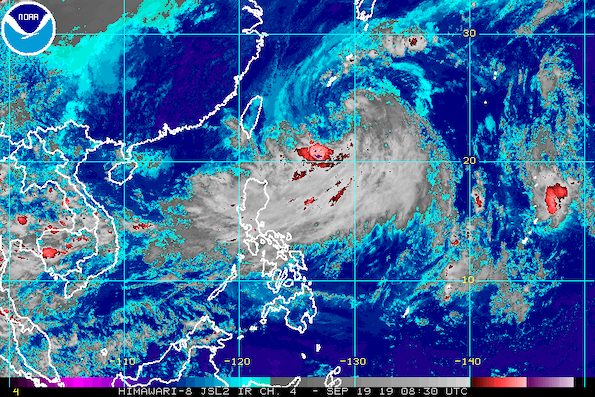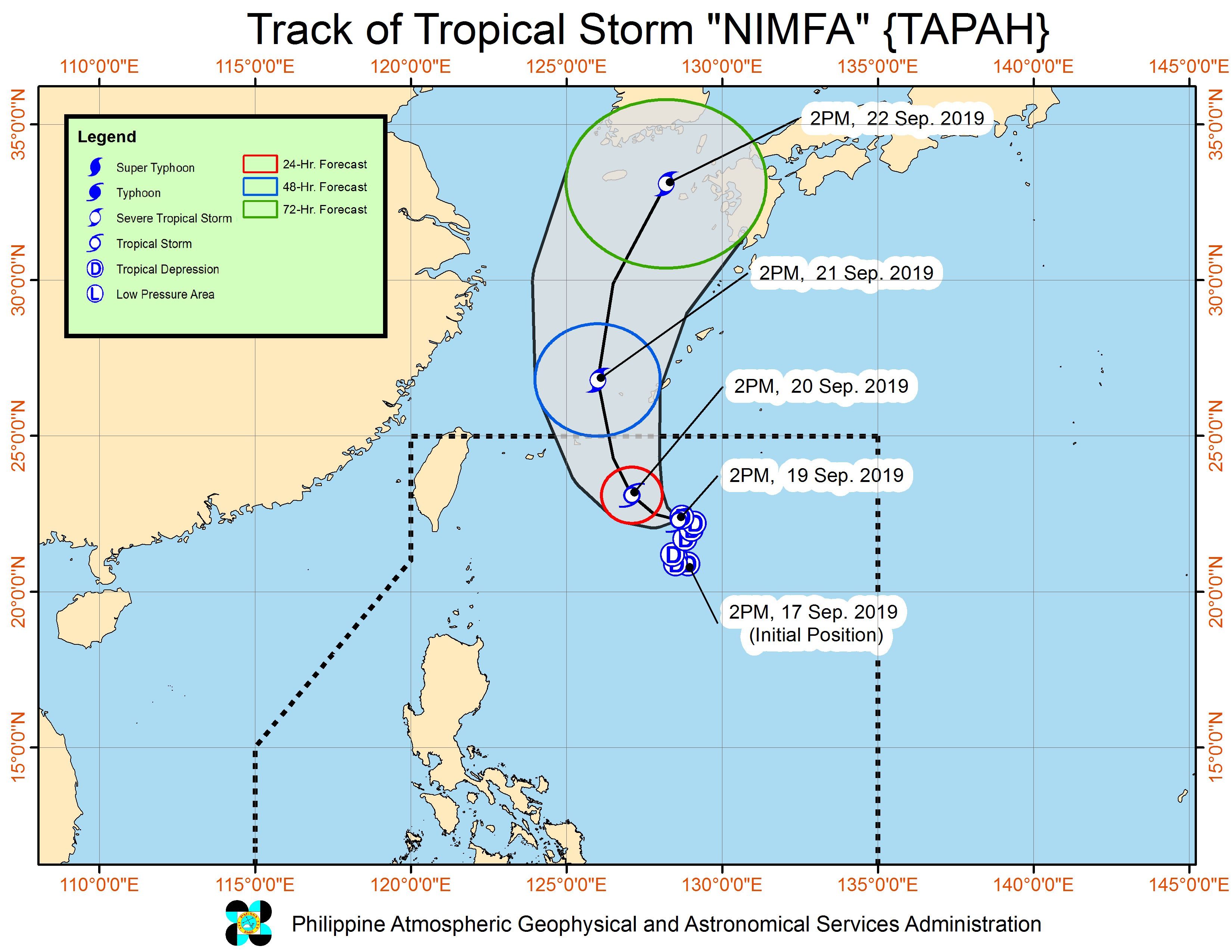SUMMARY
This is AI generated summarization, which may have errors. For context, always refer to the full article.

What’s the weather like in your area? Tweet us at @rapplerdotcom.
MANILA, Philippines – Nimfa intensified from a tropical depression into a tropical storm at 2 pm on Thursday, September 19.
It has been given the international name Tapah, a name contributed by Malaysia to the World Meteorological Organization’s list. Tapah refers to giant freshwater catfish.
In a bulletin issued 5 pm on Thursday, the Philippine Atmospheric, Geophysical, and Astronomical Services Administration (PAGASA) said Tropical Storm Nimfa (Tapah) now has maximum winds of 65 kilometers per hour (km/h) from the previous 55 km/h and gustiness of up to 80 km/h from the previous 70 km/h.
The tropical storm is 735 kilometers east northeast of Basco, Batanes, almost stationary or hardly moving.
Nimfa is not expected to make landfall in the country, and there are no areas under tropical cyclone wind signals.
But the tropical storm’s trough or extension will continue to bring rain in the next 24 hours.
More rain is expected from the southwest monsoon or hanging habagat too.
Below is the latest on the expected rainfall.
Thursday afternoon, September 19, to Friday afternoon, September 20
- Frequent light to moderate rain with occasional heavy rain
- Ilocos Region
- Cordillera Administrative Region
- Central Luzon
- Cagayan mainland
- Isabela
- Quirino
- Nueva Vizcaya
- Occasional light to moderate rain with intermittent heavy rain
- Metro Manila
- Calabarzon
- Scattered rain and isolated thunderstorms
- Batanes
- Babuyan Group of Islands
- Calamian Islands
- Occidental Mindoro
- Oriental Mindoro
- Marinduque
- Camarines Norte
- Camarines Sur
- Catanduanes
Flash floods and landslides remain possible in areas affected by Nimfa’s trough and the southwest monsoon. (READ: FAST FACTS: Tropical cyclones, rainfall advisories)
Travel is also risky in the seaboards of Northern Luzon and Central Luzon as well as the eastern seaboard of Southern Luzon due to rough to very rough sea conditions. The other seaboards of the country will remain moderate to rough, said PAGASA.
Based on Nimfa’s latest forecast track, it will leave PAR on Saturday morning, September 21.

Nimfa is the Philippines’ 14th tropical cyclone for 2019, and the 4th in September. (READ: LIST: PAGASA’s names for tropical cyclones in 2019)
The country gets an average of 20 tropical cyclones annually, but since 2019 is an El Niño year, only 14 to 18 tropical cyclones are expected.
Below is the estimated number of tropical cyclones from September to December:
- September – 2 to 4
- October – 2 or 3
- November – 1 or 2
- December – 0 or 1
PAGASA declared the start of the rainy season last June 14. – Rappler.com
Add a comment
How does this make you feel?
There are no comments yet. Add your comment to start the conversation.